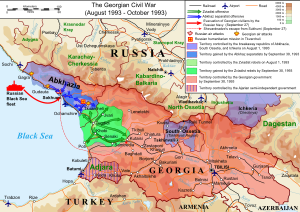.
23-7-29 Taiwan: Japanese & US Moves | Update > .
23-7-28 USN: Carriers vs (AAS) LHDs & LHAs - nwyt > . skip > .
22-8-4 Situation Zoom: Pelosi Visits Taiwan | Goodfellows - Hoover > .
22-7-21 Xina losing international trust, 10 Pacific nations rebuff joint agreement - CR > .
22-7-21 Xina losing international trust, 10 Pacific nations rebuff joint agreement - CR > .
(2022 vs 1945) Could the US military invade Japan? Binkov > .
Guam
24-11-29 Fortress Guam: US military creating Pacific bastion - Binkov > .>> Not What You Think >>
US Overseas Territories ..
- Guam
- US Virgin Islands
- Puerto Rico
- Midway Island
- American Samoa
- Northern Mariana Islands
Scattered across the globe you'll find American Overseas Territories. More than just partners but not normally actually part of the United States, these territories have a very interesting relationship with their motherland.
2 - https://www.britannica.com/place/Guam... .
3 - https://www.doi.gov/oia/islands/ameri... .
4 - https://www.britannica.com/place/Unit... .
5 - https://www.britannica.com/place/Nort... .
6 - https://constitutingamerica.org/terri... .
7 - https://sannicolas.house.gov/financia... .
The main issue was Cuban independence. Revolts had been occurring for some years in Cuba against Spanish colonial rule. The U.S. backed these revolts upon entering the Spanish–American War. There had been war scares before, as in the Virginius Affair in 1873. But in the late 1890s, American public opinion swayed in support of the rebellion due to reports of concentration camps (death estimates range from 150,000 to 400,000 people) set up to control the populace. Yellow journalism exaggerated the atrocities to further increase public fervor, and to sell more papers.
The business community had just recovered from a deep depression and feared that a war would reverse the gains. Accordingly, most business interests lobbied vigorously against going to war. President William McKinley ignored the exaggerated news reporting and sought a peaceful settlement. However, after the United States Navy armored cruiser Maine mysteriously exploded and sank in Havana Harbor on February 15, 1898, political pressures from the Democratic Party [Republican values] pushed McKinley into a war that he had wished to avoid.
On April 20, 1898, McKinley signed a joint Congressional resolution demanding Spanish withdrawal and authorizing the President to use military force to help Cuba gain independence. In response, Spain severed diplomatic relations with the United States on April 21. On the same day, the U.S. Navy began a blockade of Cuba. Both sides declared war; neither had allies.
The 10-week war was fought in both the Caribbean and the Pacific. As U.S. agitators for war well knew, U.S. naval power would prove decisive, allowing expeditionary forces to disembark in Cuba against a Spanish garrison already facing nationwide Cuban insurgent attacks and further wasted by yellow fever. The invaders obtained the surrender of Santiago de Cuba and Manila despite the good performance of some Spanish infantry units, and fierce fighting for positions such as San Juan Hill. Madrid sued for peace after two Spanish squadrons were sunk in the battles of Santiago de Cuba and Manila Bay, and a third, more modern fleet was recalled home to protect the Spanish coasts.
The result was the 1898 Treaty of Paris, negotiated on terms favorable to the U.S. which allowed it temporary control of Cuba and ceded ownership of Puerto Rico, Guam, and the Philippine islands. The cession of the Philippines involved payment of $20 million ($610 million today) to Spain by the U.S. to cover infrastructure owned by Spain.
The defeat and loss of the Spanish Empire's last remnants was a profound shock to Spain's national psyche and provoked a thorough philosophical and artistic reevaluation of Spanish society known as the Generation of '98. The United States gained several island possessions spanning the globe, which provoked rancorous debate over the wisdom of expansionism.
Djibouti Bases - China's 1st Abroad ..




